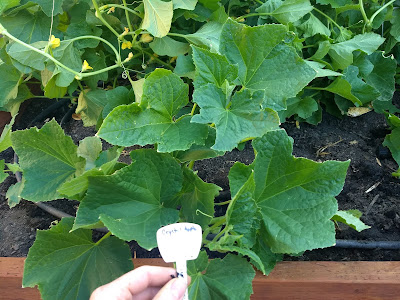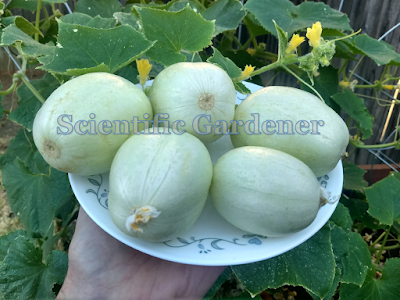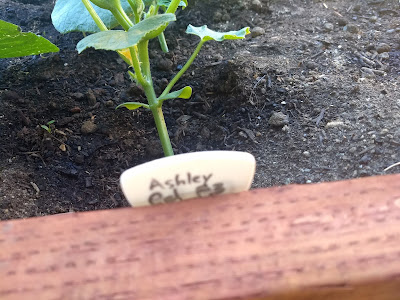While the gardener could pick them when they are green and nearly cylindrical I definitely prefer picking them when they have turned white and have filled out more.
The Crystal Apple cucumber was introduced in Sydney, Austrialia by the Arthur Yates
Seed Company and was imported and offered by American seed companies,
such as Ferry Morse, in the early 1930s. It has a relatively thick
creamy white skin, but has a nice crunch and juicy flesh.
I really enjoyed looking at the fruit, as it always seemed abundant on the vines I grew. If given the opportunity to grow many of the cucumbers I did this season, I would definitely consider another go with the Crystal Apple Cucumber.






























































